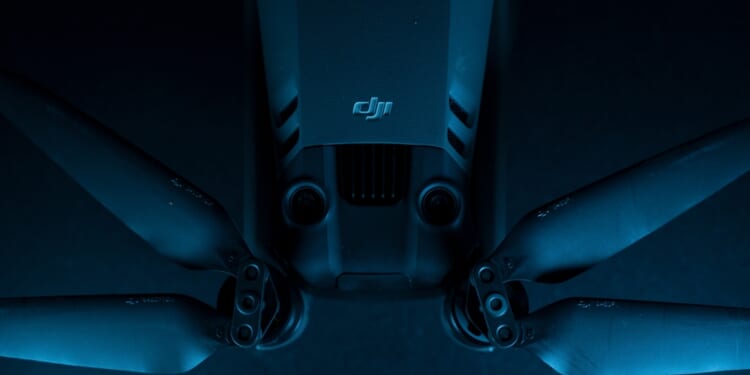Despite looming bans on Chinese drones, the United States still lacks a viable consumer drone industry—revealing a deeper challenge in rebuilding domestic manufacturing and supply chains.
Barring any new legal rulings, China-based drone manufacturer DJI faces a ban at the end of 2025. On September 26, District Judge Paul Friedman rejected DJI’s lawsuit challenging its designation as a “Chinese Military Company” by the Department of Defense. DJI claimed it has no ties to the Chinese government despite the court filings showing that DJI was funded by multiple Chinese government-connected funds.
Even if DJI and its lesser-known rival Autel (which is also on the Entity List) get banned at the end of 2025, it is still only the beginning of the long struggle to build a domestic drone industry for small drones in the United States.
America’s Missing Consumer Drone Market
As of 2025, there are still no major consumer drone startups in the United States. While there are plenty of defense drone startups targeting the Department of Defense, new startups targeting the consumer market are virtually nonexistent. Part of this is because of how difficult it is for domestic startups to compete with a behemoth such as DJI. Multiple drone companies have left the American consumer drone market, including Chinese DJI rival Autel, because of how cheap DJI drones are in comparison to other options on the market. As outlined in the DJI lawsuit, this cheapness is due to excellent manufacturing practices, and to pricing dumping and subsidies that the company receives.
While the US government has made progress in promoting drone production (including an executive order to improve drone production and the launch of the Army UAS marketplace), these changes primarily help the military market, not the consumer market. There are plenty of non-defense-related reasons why one would want a secure drone. From fighting wildfires and monitoring crop yields to surveying critical infrastructure and police work, drones are increasingly a tool that public servants and civilians use. Using a product that has a backdoor for any of these purposes is ill-advised.
The Supply Chain Problem
The challenges are not just about manufacturing drones. To lower the cost of drones, upstream drone parts, such as motors or batteries, need to be cheaper. Both these parts, and many other components, are primarily produced in China. And with some Chinese drone part manufacturers on the entity list, combined with increased prices due to the current trade war, it is more important than ever that the United States has a native supply of drone part production. The cost factor is very important. In Ukraine, for example, drone manufacturers have been able to make cheaper drones not because of lower wages, but because they managed to lower manufacturing costs through onshoring the production of drone parts. It turns out it is not necessarily cheaper to make everything in China.
To actually onshore this type of production, it will require incentives to produce “boring” technology. It is easy to advocate for advanced technologies such as semiconductors or lithium-ion batteries. Understandably, it is harder to advocate for the production of less exotic technology, such as drone motors. But cheap motors lead to cheap drones. They can also be reused in equipment like air purifiers or cooling systems. Far from just supporting one small part of the military-industrial complex, supporting the production of upstream parts could positively impact other civilian industries.
Policy Tools for US Domestic Production
For example, one tool that could be used is a price floor, in which the government sets a minimum price for a product that it purchases. This can minimize the impact of price dumping by foreign rivals by ensuring that American manufacturers can compete in terms of quality and capability, rather than being undercut by subsidized Chinese alternatives. A price floor for batteries purchased for government use would create breathing room for domestic startups to establish themselves without having to worry about rivals’ price dumping.
Another tool the US government could use is an Advanced Market Commitment. The government could guarantee the purchase of drones if the drones hit technical requirements for improvements in battery, casing, and motor technologies. The United States does not need to centrally plan the specifics of how a part is made. The government can set benchmarks with payoffs and let willing market participants fight and innovate to reach those benchmarks.
Advanced Market Commitments have been used for manufacturing before, and even by the US government. For example, the National Aeronautics and Space Administration’s (NASA) Commercial Orbital Transportation Services (COTS) program in the 2000s spurred the development of spacecraft by providing contracts to rocket manufacturers that hit milestones. NASA only cared that the rocket manufacturers produced rockets that fit NASA’s needs. As seen by NASA’s analysis, rockets built via COTS contracts were about 10 times cheaper than rockets built in-house by NASA.
The challenge now is not in restrictions and bans, but in economic statecraft to ensure that American drone manufacturers can truly build in America.
About the Author: Lars Erik Schönander
Lars Erik Schönander is a Research Fellow at the Foundation for American Innovation. He was previously a Congressional Innovation Fellow for TechCongress, working for the Senate Committee on Small Business and Entrepreneurship, and a Policy Technologist at the Foundation for American Innovation. He holds a BA from The George Washington University in International Affairs and Economics and is an incoming MBA student at the Tuck School of Business at Dartmouth College. His writing has appeared in the Wall Street Journal, American Affairs, the National Interest, Tablet, and elsewhere.
Image: Robert and Monika/shutterstock
















